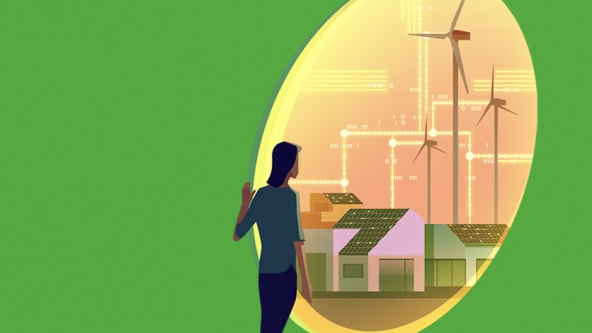We’re rapidly approaching the end of our current decade. As we enter the 2020s, we’re looking to the future; not next year, but to 10 years’ time. What will the world be like in 2030?
To kick off the series, we’re taking a look at what transportation could look like in 2030. With rising concerns about pollution, over-crowded and inefficient public transport, and a distinct lack of hover cars (looking at you, Blade Runner), what could change in ten years? We asked Dan Saunders, our zero-emissions transport specialist, to tell us what he thinks 2030 will look like.
Carbon-free as a given
The majority of vehicles on the road will be zero emissions by 2030. Transport is the UK’s largest source of pollution. And with cities’ populations continuing to increase, pollution from traditional transport will harm more people.
The most feasible way to reach zero emissions in transport is to electrify vehicles using renewable energy. Most likely, battery-powered electric vehicles will make this happen. Over the coming years, this technology will continue to improve as battery chemistry develops. Hydrogen fuel cells are another option for the electrification of vehicles; heavier vehicles or those requiring greater driving range may find these especially useful. Or we may see the emergence of alternative technologies to harness clean energy by 2030.
Autonomous vehicles
Autonomous electric vehicles will be an accepted form of transportation in ten years’ time. The technology to deploy fully autonomous vehicles, i.e. self-driving cars, is around five to ten years away from being commercially viable. Public perception of this new technology will also need to develop in order to put autonomous vehicles on our roads.
The potential safety benefits of autonomous vehicles can’t be ignored. Road traffic injuries are the leading cause of death among children and young adults worldwide. Autonomous vehicles would reduce accidents caused by human error, therefore reducing the total number of road traffic accidents by a substantial amount. It’s unrealistic to think there would be no traffic accidents once autonomous technology is in place, but traffic safety would be greatly improved.
Flying taxis and drone deliveries
It might sound like something out of the Jetsons but flying taxis, or electric-powered vertical takeoff and landing (eVtol) aircraft, are actually being developed right now. By 2030, they could be nearing commercial reality. Taking taxis to the skies would reduce congestion on roads and offer a quicker, more efficient way of getting around. But there are few issues that need to be solved in the coming years, mainly those of noise pollution, powering the vehicles with zero emissions technologies, and ensuring they operate safely in already over-crowded cities.
The technology behind flying taxis is similar to that of drones, with smaller propellers around the outside of the vehicle supporting a cockpit in the middle. A much more practical deployment of this kind of tech would be using these vehicles for deliveries. This has already been tested by the likes of Google in rural geographies, and means deliveries can reach homes more quickly. Plus, these drones could reach locations that are inaccessible by road. By 2030, we could see wider scale aerial delivery in urban areas too, completely changing the way we order and receive our goods.
No more vehicle ownership
There will be no need to own a car in 2030. Right now, there are more than 35 million cars in the UK. Of that 35 million cars, only around 10% are in use at any given time, which is incredibly inefficient. Plus, a combination of depreciation and maintenance also make vehicles extremely expensive to own. But we don’t currently have a viable alternative.
In the future, instead of owning a car, you’ll use public transport, hail a taxi, or rent a vehicle on subscription, if you need dedicated access. Fleets will own vehicles (including autonomous ones) which will be called upon when needed, offering customers a cheaper, more convenient choice when it comes to mobility. There will be fewer vehicles on the roads, but each will benefit from much higher utilisation.
One app to rule them all
If you don’t own a car, you’ll need an easy way to get from place to place, connecting all the transport evolutions we’ve already talked about. In 2030, I believe all our transport needs will be fulfilled by a single app, accessed using our phones. You’ll plug in your destination and the app will direct you to use a combination of clean transport components to reach your destination. For example, it might reserve your electric scooter outside your office, will book your train ticket for you ahead of you reaching your departure station, and would then hire you an autonomous vehicle for you to collect upon your arrival.
Providing you with the quickest route to your destination would go hand-in-hand with setting up clean transportation for each step of your journey, making travel a much more pleasant, efficient prospect for us all.
Transport is quickly becoming a utility for us to consume as a service, much as we do energy or water. With these developments moving to fewer, more efficient, cleaner and higher utilised vehicles, the environment and our health will feel the benefits.
Keep an eye out for the next piece in our 2030 series to find out what our homes may look like and discover how we could be living in the future.
Image: Mark Boardman represented by Meiklejohn.co.uk


